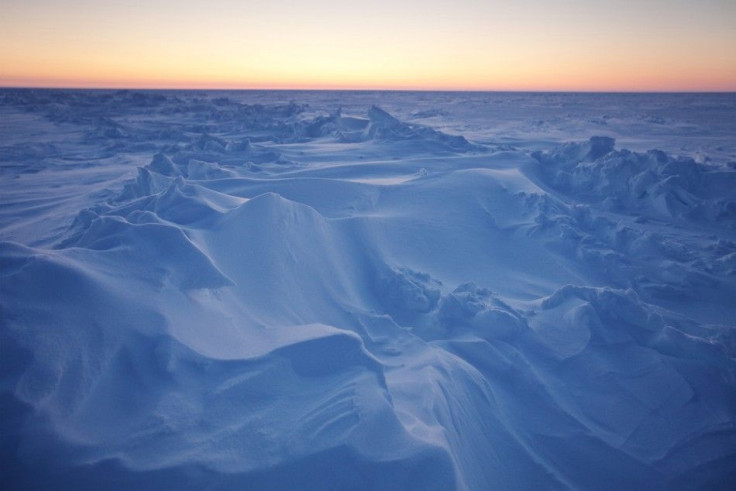Arctic Sea Ice Melting Faster, Lowest Dips Recorded in July

Scientists on Thursday said that satellite images of Arctic sea ice show that it is melting at a near-record pace.
Driftwood in north Greenland indicates that, for the past 10,000 years, there were at least 50 percent less sea ice in the Arctic than there is today, the team reported in the journal Science on Friday.
Scientists said that the changes in the wind system resulted in slowing down the melting rate.
The image by satellite shows that Arctic ice cover has reached at its lowest level in the last 32 years, from July 1979 to 2011.
The average ice extent for July 2011 was 7.92 million square kilometers, which is 210,000 km below the previous record low for the month, set in July 2007, the National Snow and Ice Data Center's (NSIDC) Colorado-based scientists reported on Wednesday.
NSIDC's new data reveals that more of the Arctic's oldest ice disappeared, showing a decline in the oldest, thickest ice; but the central Arctic Ocean and Nunavut's High Arctic islands have served as refuges for some of this ice.
However, the ice age is declining in these areas, too.
Scientists said that except East Greenland Sea, the ice coverage remained below normal everywhere.
Throughout July, Arctic sea ice declined at an average speed of 90,200 square km/day.
Due to the weather change in the last two weeks of July, the ice loss has slowed "substantially," the NSIDC said.
But a Danish team believes that they have found an indirect method that will give a clear picture of the ice loss in the last 11,000 years.
Dr Svend Funder from the Natural History Museum of Denmark has led several trips to unfriendly regions of Northern Greenland.
Danish team on these frozen shores noticed, that several pieces of ancient driftwood serves as an evidence to unlock the secrets of the ancient ice.
"Driftwood cannot float across the water, it has to be ferried across the ocean on ice, and this voyage takes several years, which means that driftwood is actually a signal of multi-year sea ice in the ocean and it is this ice that is at risk at the moment" Dr Funder said.
"It's so lovely that drift wood from Siberia is mainly larch and from North America is mainly spruce. So if we see there was more larch or spruce we can see that the wind system had changed and in some periods there was little spruce and in other periods there was lots," he said.
The Arctic sea ice between late March and late July, first-year has declined by 30 per cent, multi-year ice declined by 14 per cent, and the oldest ice, or ice older than five years has declined by 16 per cent, the NSIDC stated.
The Arctic shipping routes have also less ice this year than usual.
© Copyright IBTimes 2025. All rights reserved.





















